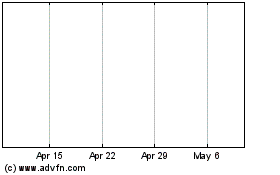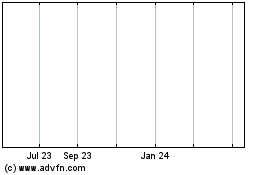Samsung Electronics Expects Operating Profit Rose 44% in First Quarter -- Update
07 April 2021 - 2:41PM
Dow Jones News
By Timothy W. Martin in Seoul and Kwanwoo Jun in Singapore
Samsung Electronics Co. said it expects a 44% increase in
operating profit for the first quarter, topping expectations during
a global shortage of semiconductors and despite shutdowns of some
U.S. chip-making facilities.
The world's largest smartphone and memory-chip maker forecasts
operating profit of 9.3 trillion South Korean won, equivalent to
about $8.3 billion, during the first three months of the year. That
compares with about 6.5 trillion won for the prior year's
quarter.
The Suwon, South Korea-based firm estimates revenue of 65
trillion won, up 17% compared with the prior year.
Samsung's outlook topped the estimate of analysts gathered by
S&P Global Market Intelligence of about 9.1 trillion won in
operating profit and 61.4 trillion won in revenue.
The South Korean company is due to report full earnings later
this month. Samsung is considered a bellwether for the tech world
because it makes major electronics products and supplies
competitors including Apple Inc. and Huawei Technologies Co. with
components.
During the Covid-19 pandemic, Samsung and other semiconductor
companies have benefited from a short-term boom in demand for
memory chips from data centers stepping up capacity and consumers
buying more devices to shift to working from home. Now many buyers,
including auto makers, have encountered delays in trying to
purchase semiconductors as economies start to reopen.
The Biden administration is expected to meet later this month
with chip makers and other manufacturers, with Samsung a likely
participant, as U.S. officials explore ways to boost domestic
production during a global shortage. As part of President Biden's
$2.3 trillion infrastructure plan, roughly $50 billion will go
toward the American semiconductor industry, offering production
incentives and research and design, including the creation of a
National Semiconductor Technology Center.
Samsung was forced to idle chip production in Austin, Texas, in
February because of severe weather. Company officials recently said
production had returned to near-normal levels. But industry
analysts have said the weekslong shutdown could trigger losses of
roughly $350 million or more.
Global chip makers have recently announced plans to increase
production capacity, and Samsung plans to invest about $116 billion
by 2030 to diversity and boost its semiconductor output. The South
Korean company is also considering an investment of up to $17
billion to build a new chip-making factory in the U.S.
At its annual shareholder meeting last month, Koh Dong-jin, a
co-chief executive officer of Samsung, told investors that a severe
global shortage in semiconductors would hurt its business into the
next quarter.
Sales of Samsung's latest flagship phone, the Galaxy S21, which
launched in January, have been stronger than the prior year's
version, according to industry analysts. Global smartphone sales
are expected to rise this year after falling sharply during the
pandemic, which closed many bricks-and-mortar stores and triggered
layoffs.
The down year prompted another South Korean company, LG
Electronics Inc. to pull out of the mobile-phone business by July
31, following years of losses. Samsung could be a beneficiary,
especially in the U.S., where LG had been the third-largest
vendor.
Write to Timothy W. Martin at timothy.martin@wsj.com and Kwanwoo
Jun at kwanwoo.jun@wsj.com
(END) Dow Jones Newswires
April 07, 2021 00:26 ET (04:26 GMT)
Copyright (c) 2021 Dow Jones & Company, Inc.
Samsung Electronics (PK) (USOTC:SSNHZ)
Historical Stock Chart
From Dec 2024 to Jan 2025

Samsung Electronics (PK) (USOTC:SSNHZ)
Historical Stock Chart
From Jan 2024 to Jan 2025
